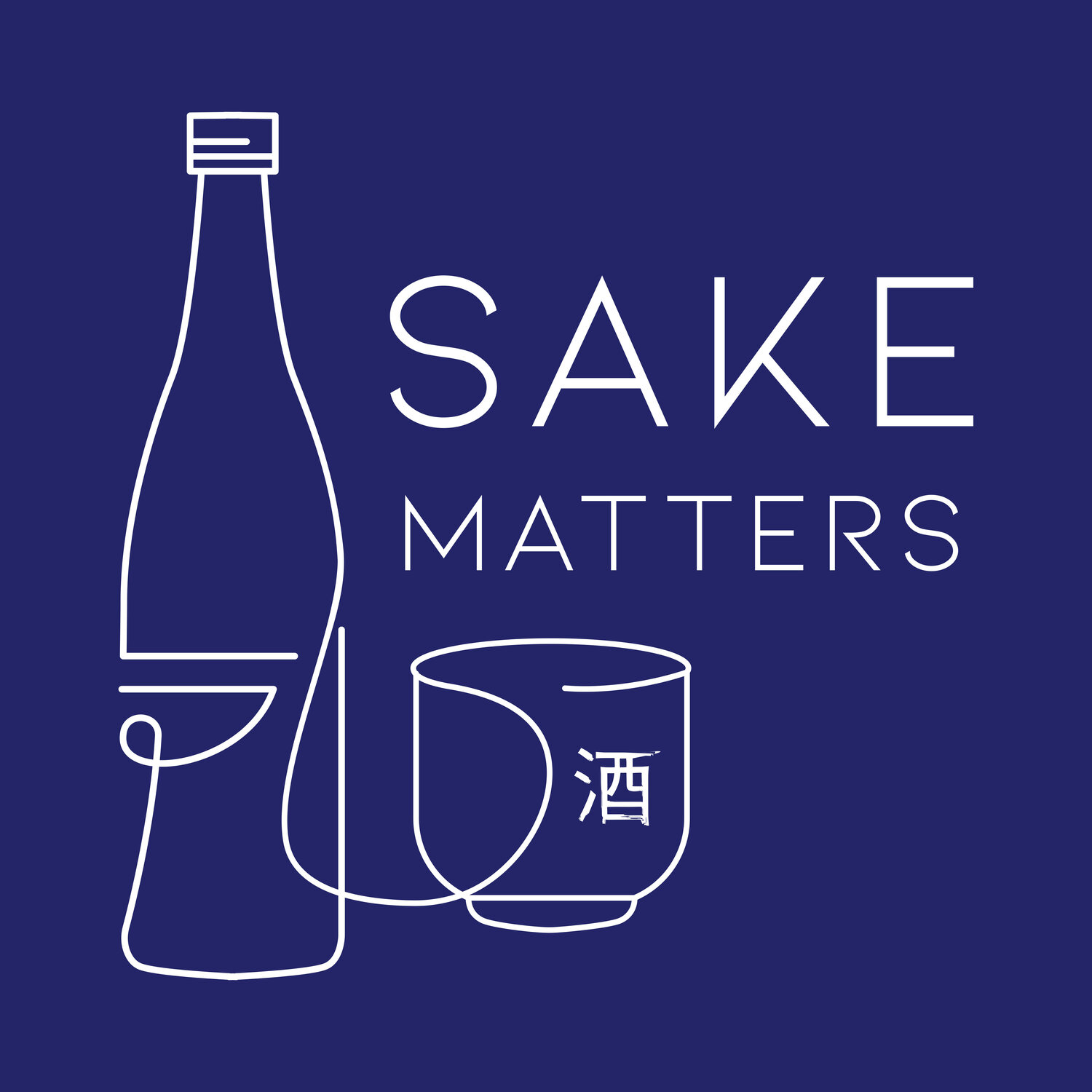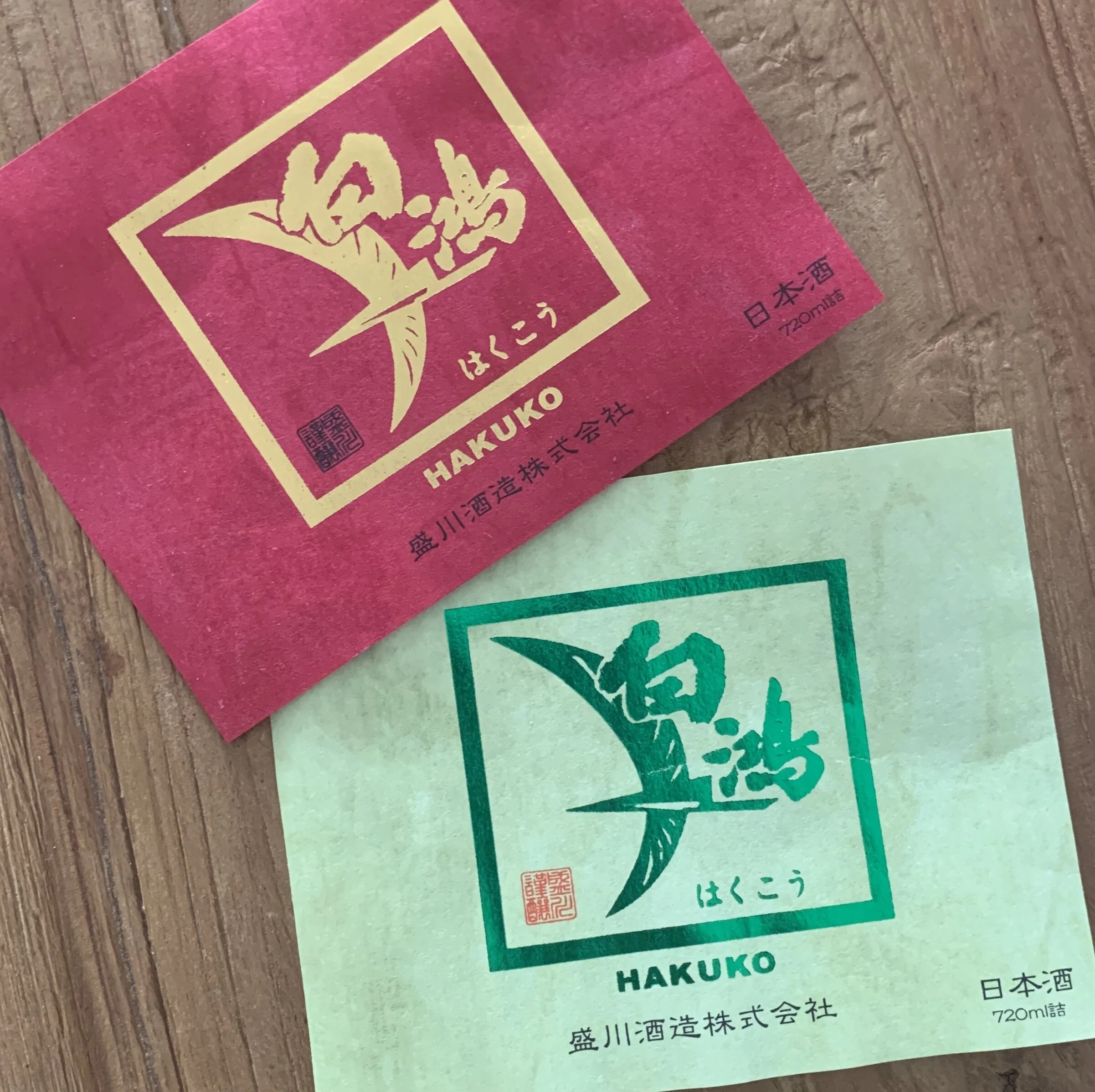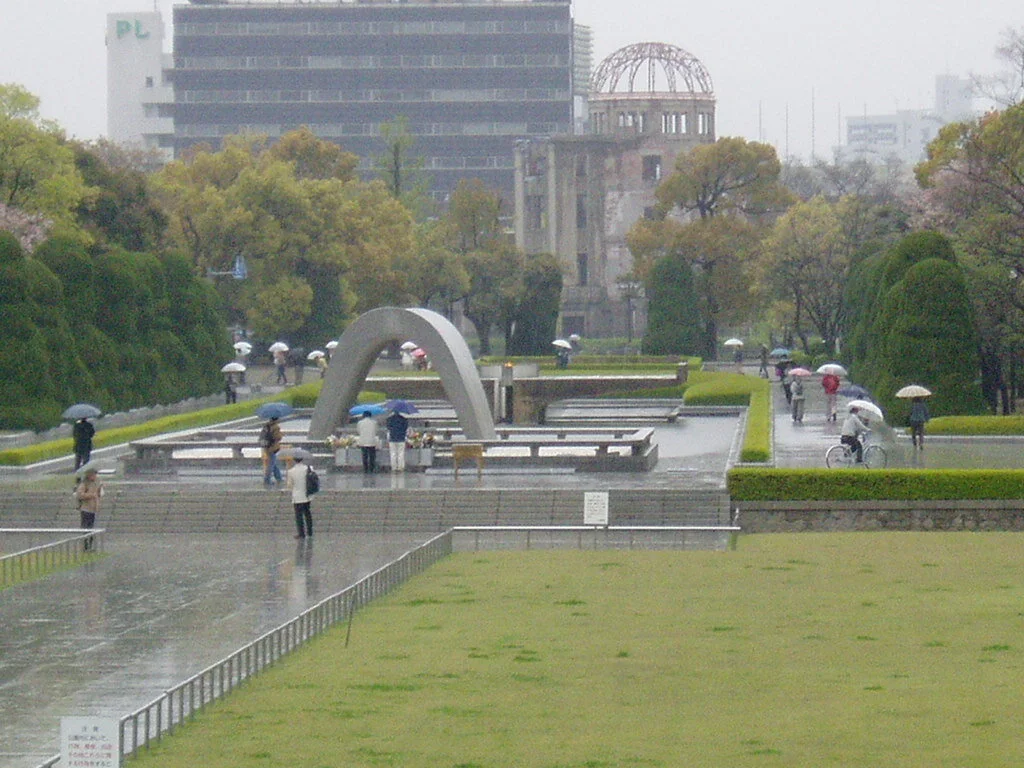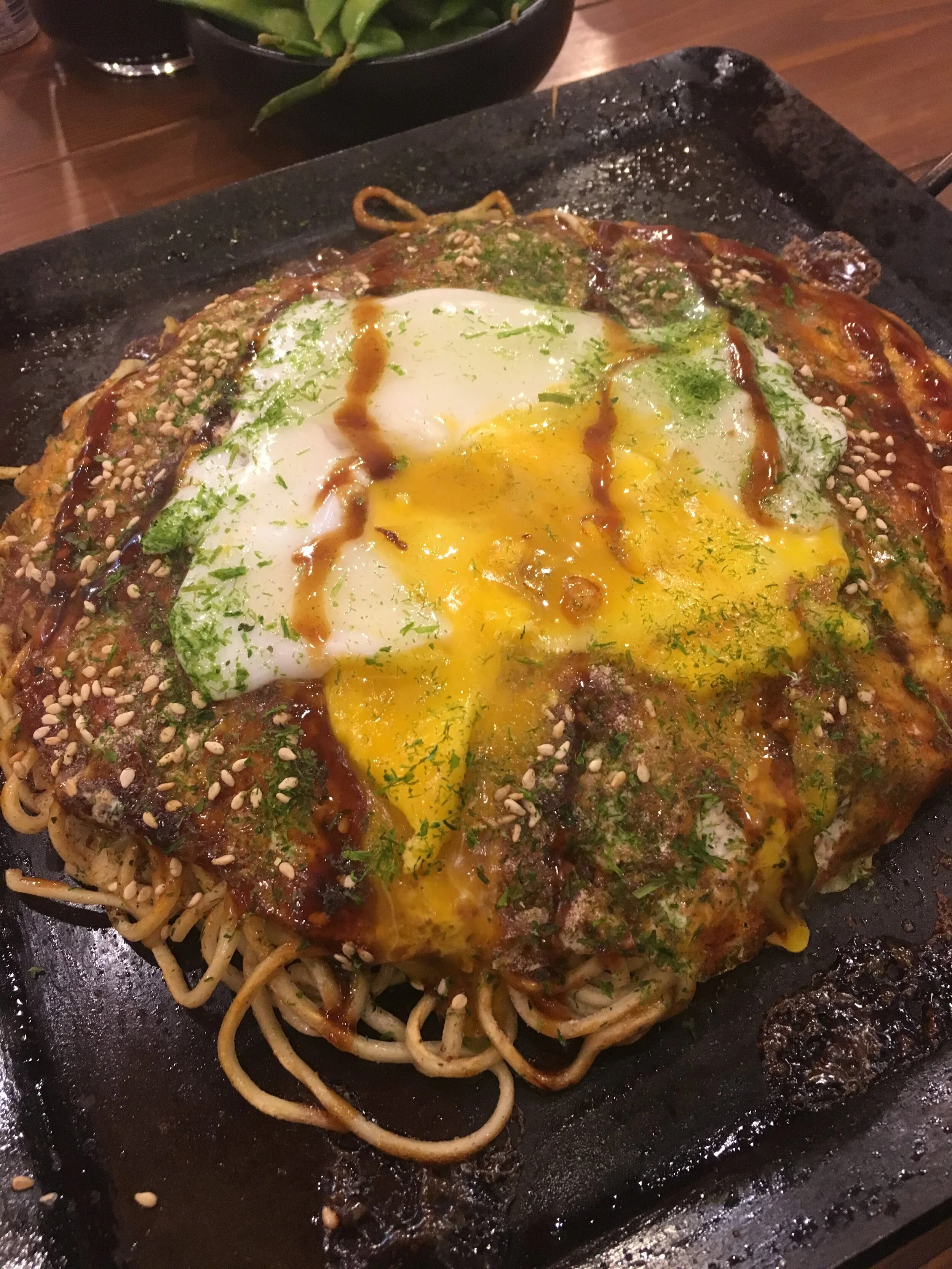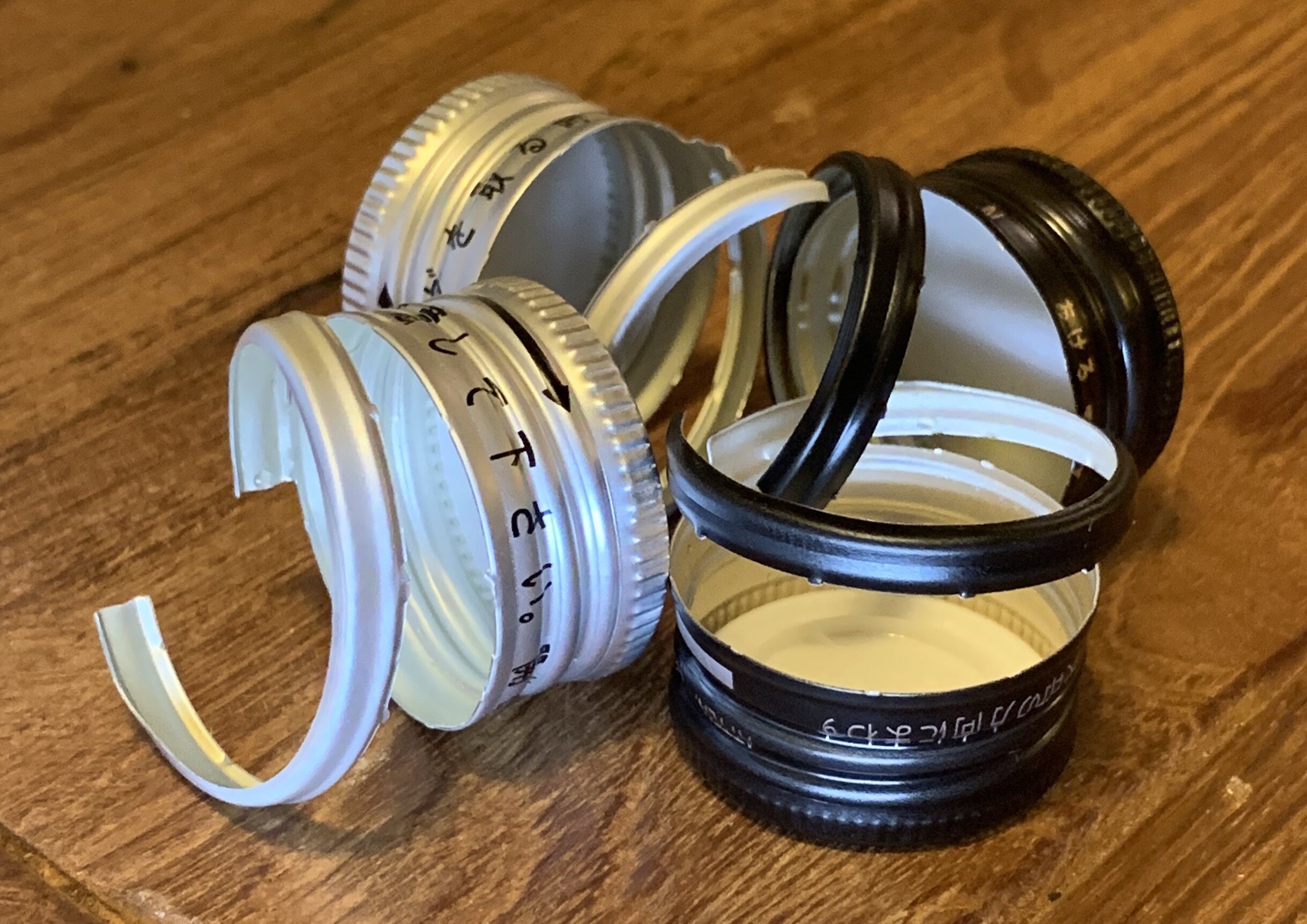ESPECIALLY FOR YOU / A TALE OF TWO SAKES
No, I haven’t lost it and decided to reminisce about Antipodean star-crossed lovers Kylie and Jason, and their 1989 big hair video for Especially For You, but rather it’s an appropriate title for this blog about Tokubetsu: special Sake.
How’s it special? In true Sake industry style, there’s sort of an answer here. Within the premium categories of "Tokutei-meisho-shu" or "special designation sake", Tokubetsu is a vague term than can be applied to both Junmai and Honjozo Sakes, more often than not identifying them as special due to being made with either special rice or (most of the time) a more highly milled rice than the grade requires. Whatever the elevated criteria, it is supposed to be written on the label, but often is omitted.
So here goes with my piece on testing the Tokubestsu claim, with Hiroshima Prefecture’s Hakuko brand Sake.
We first visited Hiroshima in 2006, one of many legs on our first trip to Japan that quickly cemented the nation as quite simply a wonderful place to be. Sake wasn’t on our radar then, much to my disgust nowadays, but exploring and lapping up whatever else we could of Japanese culture and history was.
The art of fugu. Note the selection of Sakes behind, if only I knew
Amidst interminable rainstorms in Hiroshima city, this led to a lunchtime respite from the weather sampling fugu, prepared by a Chef who seemed keen to compound our fears of the risks involved, exchanging worrying (yet playful) glances with his colleagues as we nervously tucked in. Having survived that, we plumped for a posh pizza for dinner that night, which had me exchanging equally worrying glances with my wife as to whether we could afford it. The pizza was damn good though, yet for some reason I still recall it being cripplingly expensive.
Most poignant of all, the slating rain gave us the chance to witness the iconic Atomic Bomb Dome, or Genbaku Dome as it is now known, in an even more sobering light. The Kodak disposable camera’s photo doesn’t do it justice, or perhaps it does.
Hiroshima Peace Park and beyond it, the Genbaku Dome (2006)
It took another 12 years before we returned to Hiroshima - well there’s so much good stuff in Japan to visit - and this time we were there for Sake.
Night one’s late flight arrival forced us (albeit hardly kicking and screaming) into enjoying the local version of Okonomiyaki, where cabbage is king and piled high with all the other traditional gubbins. Although this doesn’t render the dish anywhere close to healthy, it is of course naughtily delicious.
We left the bar avid Hiroshima Toyo Carp baseball team supporters, brainwashed by the walls bedecked with white and red player paraphernalia, and well lubricated with our first in Prefecture taste of Hiroshima Sake.
Okonomiyaki: It’s all in the presentation
And so to Morikawa Shuzo, an hour or so east of Hiroshima city, and a little less than that south of Saijo, the fun little “Sake Town”, a brilliant day trip out of the metropolis and home to Kamoizumi, one of my favourite brewers. More on them another time.
Akitsu is to the east, the spiritual home of Ginjo-shu brewed using soft water, a seismic development in Sake production developed over 100 years ago by Sanzaburo Miura. In short, we’re in a Sake brewing hotspot.
A quick digression on the Shuzo before I take the Tokubetsu Test.
Morikawa has been brewing continuously since their foundation 130 years ago, following Miura-san’s recommendation for soft water brewing, traditional to many Hiroshima breweries.
It’s been quite a journey for the seven generations. Originally the brewery was called Morizuru but this changed in 1945. Having all but survived the war, the Norogawa River which flows alongside the brewery, and provides soft waters to a subterranean aquifer for brewing, broke its banks when a typhoon hit the area. Seven brewery buildings were trashed and washed away, including the original brewery structure itself as well as the owner’s residence, leaving much of the brewery’s story shrouded in mystery and uncertainty.
Luckily for us, the spirit of Morizuru lives on in Morikawa’s Sake, remaining as good as ever, something which wartime miseries, Mother Nature and now Coronavirus couldn’t spoil.
My simple test won’t prove a lot, or change the world, but having heard of late a lot more talk than usual about how Tokubetsu is the thinking man’s choice, the savvy Sake buy without the Ginjo price tag, it’s a least worth a go. And by tasting Hakuko’s two Junmai side by side - Hakuko ‘Red’ and Tokubetsu Hakuko ‘Green’ - we may get some closure on these assertions.
The Hakuko series (there are other colours too beyond red and green) is the brewery’s self-confessed “everyday sake”:
We want these to be part of people’s relaxed daily lives, comfortably complementing the family table in the custom expressed in the Japanese word banshaku (晩酌)
Banshaku is the charming word for the lovely habit of drinking alcohol at home in the evening and particularly around dinner time.
Let’s start with ‘Red’, the lesser (in theory) of the two.
This Sake is funkier than the Tokubetsu, conveyed by a lot of mushroom aromas, fresh and dried, and it has a meat broth flavour to it, verging on truffles and perhaps something more vegetal. Staying in the forest, there’s something cedar about the Sake too, although it’s not seen any taru.
‘Green’ is certainly more of an ‘adult’ Sake, cleaner and more delicate. It displays some archetypal Junmai connotations of full bodied riceyness (if that’s a word even) and has some lactic attributes and general all-round lusciousness. The hint of some fruitiness, apart from the more overall sophistication, is perhaps the key to what is making this Tokubetsu and worthy of its Ginjo grade 60% polishing rate. Basically, you’re drinking some of the classiness of a Ginjo but with the richer flavours expected from a more ‘junior’ premium grade Sake.
Anyway, here’s the line-up, in the Green corner and the Red corner if you like, and perhaps solid evidence that this experiment is fundamentally flawed:
I found out 1,500 words into this piece that these Junmai aren’t exactly comparable. The rices are quite different in that the straight Junmai uses Nakate Shinsembon from Hiroshima whereas the Tokubetsu blends Hattan No.35 from Hiroshima and top notch A Graded Yamada Nishiki from Hyogo. This would explain the lusciousness in the latter.
Acidity is largely the same but there’s a significant disparity in the sweetness levels although it’s not as pronounced in the tasting itself. ‘Red’ is a little sweeter, yes, but not to the levels displayed on paper.
This sweetness is driven by a fourth stage in the making of the fermentation mash, at which point a sweet Amazake is added. It’s subtle but it’s there. And this may be due to the final significant difference between the two Sakes - the straight Junmai has a 2016 brewing year, versus 2018 for the Tokubetsu. Over these years I am thinking the Amazake mellows a little and its presence is given the opportunity to fade somewhat into the overall Sake, preventing it from giving a sweet smack to the face as you taste it.
So, observations…
What we have here are two Junmai made with some of the softest waters in Japan, in a region renowned for Ginjo quality, and we know that Toji Morikawa Motoharu creates all his Sake using the traditions of Hiroshima soft water brewing techniques.
In my head then, both Sakes are already special. What I narrow-mindedly thought would be a simple comparison experiment is far from that and I’m glad it is. It underlines the nuances and complexities within the Sake world that ensures it remains a constant learning curve and the enigma that has drawn me in over all these years. You can’t simply compare A with B, the Sake industry won’t let you.
The fact that ‘Red’ isn’t itself Tokubetsu (given that it is made with 100% locally sourced Hiroshima rice, one that is outside the top 30 used in Sake production and uses an unusual fourth addition) illustrates the Brewery’s understated approach. It could be Tokubetsu for these very reasons but they don’t take the bait of a potential overpromise. It’s a lovely surprise to try something so special that isn’t overtly promoted as such.
‘Green’ is Tokubetsu for more textbook reasons (although only in as far as Tokubetsu is somewhat defined), namely the 60% polishing rate, and it delivers an elevated Junmai, a Junmai+ if you like.
Therefore, if I am permitted a conclusion, it would in this case actually be that the straight ‘Red’ Junmai is the red herring here and is perhaps as much worthy of being Tokubetsu as ‘Green’. And funnily enough ‘Red’ is priced HK$1 more than ‘Green’ here in Hong Kong!
But above all, I conclude that this exercise illustrates just how Sake continues to intrigue, confuse and mystify me the more I drink of it.
The Brewery puts it better still, and I definitely concur, when they lay out their aim in making Hakuko Sake:
Sake you don’t get tired of, Sake you can keep on drinking; Sake you find yourself enjoying another glass of without thinking
Love you Hiroshima, see you again soon.
FOOTNOTE:
This is intended as a bit more of a quick piece of writing, largely because a post is overdue, but I also wanted to do something in honour of Hiroshima which is of course in our thoughts at the moment, along with Nagasaki, 75 years on from the decimation.
QUICK GLOSSARY:
Junmai 純米: Sake made using only rice, water, yeast and koji – no added alcohol (純: pure; 米: rice)
Tokubetsu 特別: Simply means “special” and identifies that a special production process was applied to a Junmai or Honjozo category Sake. More often than not it designates that a lower rice polishing rate than required took place
Tokutei-meisho-shu: Special designation Sakes, variously categorized but all meeting various stringent guidelines
Honjozo 本醸造: Sake made from rice at a polishing ratio below 70%
Ginjo 吟醸: Sake made from rice at a polishing ratio below 60%
Taru: Taru is a wooden cask, normally cedar, and taruzake (樽酒) is Sake that has been stored or aged in such casks, imparting its woody flavour to the Sake
Amazake: Literally translates to “sweet sake”, Amazake is a thick, white sweet beverage with little to no alcohol content
Toji: Master Brewer with ultimate responsibility for brewing and the leadership of the brewing team
LINKS:
Morikawa Shuzo Co., Ltd
〒737-2506, 44 Harahata, Yasuura-Cho, Kure-Shi, Hiroshima
www.morikawa-shuzo.com/en/
@morikawa_shuzo
